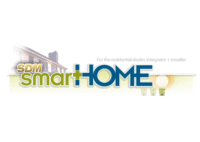Will HGTV’s Green Home Sweepstakes Accelerate Trend?


|
| The HGTV 2012 Green Home sweepstakes will add some national attention to sustainability. The home has also been dialed down in square footage. Photo Courtesy of HGTV |
It’s green and small. And someone is going to win the HGTV Green Home after a full-press national campaign that will help educate homeowners on the positives of sustainability.
Kemp Hall Studio designed the 2,300-square-foot HGTV Green Home 2012 to look, feel and live like a 4,000-square-foot home.
A central outdoor space, which will feature its own kitchen, replaces the traditional backyard at HGTV Green Home 2012. Rooms, including the kitchen, dining room, Georgia room and master bedroom, wrap around this space; the kitchen opens up to the courtyard via an accordion door.
Energy Star-rated windows and doors from Andersen’s 400 series help control the home’s heating and cooling costs. SunSmart glass placed on East- and West-facing walls provides clear views while blocking damaging ultraviolet rays and solar heat gain.
HGTV Green Home 2011 will earn LEED certification points for its use of locally sourced building materials, including asphalt roof shingles. Use of brick, manufactured within 30 miles of the home, reduces carbon emissions that would result from transporation of the product to the construction site.
A five-kilowatt Photovoltaic (PV) array, installed on the roof of HGTV Green Home 2011, will generate approximately 75 percent of the home's energy. HGTV Green Home 2011 will remain connected to the utility grid, which will provide energy when the panels are not in use or producing an insufficient amount of energy to power the home.
Both the furnace and hot water heater are sealed combustion systems that vent directly outside, eliminating the danger of combustion gases and CO leaks. Performance testing is conducted once heating, cooling and ductwork are installed. Measurements of air leakage from ducts and from the home interior to exterior are compared to levels calculated by the build team. Results typically meet or exceed the build team's expectations. CO detectors installed throughout the home insure indoor air quality at HGTV Green Home 2011.
Serenbe, a sustainable community less than 30 minutes from Atlanta, serves as the location.
There, all homes are built to the standards of EarthCraft House guidelines, and are placed on and within sites with the goal of creating minimal disturbance to the natural terrain. Many homes use geothermal heating, and all are designed in relation to the sun to maximize natural heating and cooling, with windows placed for cross-ventilation. Water conservation is also a priority at Serenbe. The monthly water usage for Serenbe as a community is 25 percent lower than the national average. Water conservation practices include water-smart appliances like dual-flush toilets and storm water treatment using natural barriers.

|
| Alternative forms of energy, including solar panels such as these on the roof of the HGTV Green Home, are part of the green equation. Photo Courtesy of HGTV |
Green building — or sustainable building — involves incorporating eco-friendly elements into the design and maintenance of a home and minimizing the impact on the environment when building houses, condos and the like. More homeowners and builders are interested in green building and want to choose energy efficient features for their homes.
From kitchen cabinets to skylights to siding, consumers are looking for eco-friendly features for their homes, often paying premium prices for the extra value. High energy costs, limited natural resources, awareness of global climate change, better understanding of building science and growing health concerns are all contributing to a lasting green movement. The fact is that sustainable houses last longer, have fewer problems, are cheaper to live in and keep people healthier and happier. And who doesn't want that to last forever.
Looking for a reprint of this article?
From high-res PDFs to custom plaques, order your copy today!





